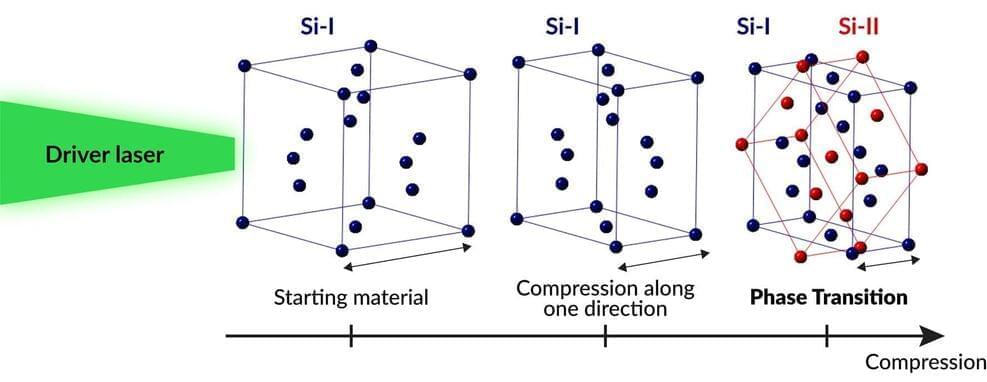Silicon, an element abundant in Earth’s crust, is currently the most widely used semiconductor material and is important in fields like engineering, geophysics and plasma physics. But despite decades of studies, how the material transforms when hit with powerful shockwaves has been a topic of longstanding debate.
“One might assume that because we have already studied silicon in so many ways there is nothing left to discover,” said Silvia Pandolfi, a researcher at the Department of Energy’s SLAC National Accelerator Laboratory. “But there are still some important aspects of its behavior that are not clear.”
Now, researchers at SLAC have finally put this controversy to rest, providing the first direct, high-fidelity view of how a single silicon crystal deforms during shock compression on nanosecond timescales. To do so, they studied the crystal with X-rays from SLAC’s Linac Coherent Light Source (LCLS) X-ray laser. The team published their results in Nature Communications on September 21st. What they learned could lead to more accurate models that better predict what will happen to certain materials in extreme conditions.
